Tibialis anterior muscle Anatomy, Origin, Insertion, Function, Exercise
Table of Contents
Introduction
- The tibialis anterior is a muscle in humans that originates along the upper two-thirds of the lateral surface of the tibia & inserts into the medial cuneiform & first metatarsal bones of the foot. It acts to dorsiflex & invert the foot. This muscle is mostly situated near the shin.
- It is located on the lateral side of the tibia; it is thick & fleshy above, & tendinous below. The tibialis anterior overlaps the anterior tibial vessels &deep peroneal nerve in the upper part of the leg.
Origin of Tibialis anterior muscle
It arises from:
- Lateral condyle & upper half or 2/3 of the lateral surface of the body of the tibia
- Adjoining part of the interosseous membrane
- The deep surface of the fascia
- The intermuscular septum between it & the Extensor digitorum longus muscle.
Insertion
- Medial & under the surface of the 1st cuneiform bone, & the base of the first metatarsal bone
Structure
- It arises from the lateral condyle & upper half or two-thirds of the lateral surface of the body of the tibia; from the adjoining part of the interosseous membrane; from the deep surface of the fascia; & from the intermuscular septum between it & the extensor digitorum longus.
- The fibers of this circumpennate muscle are relatively parallel to the plane of insertion, ending in a tendon, apparent on the anteromedial dorsal aspect of the foot close to the ankle joint.
- After passing through the most medial compartments of the transverse & cruciate crural ligaments, it is inserted into the medial and under the surface of the medial cuneiform bone & the base of the first metatarsal bone.
Function of Tibialis anterior muscle
- The tibialis anterior muscle is the medial muscle of the anterior compartment of the leg. It is responsible for dorsiflexing & inverting the foot, & the largest dorsiflexor of the foot. The muscle has 2 origins, one being the lateral tibial condyle & the other being the upper lateral surface of the tibia, & inserts on the medial surface of the medial cuneiform & adjoining part of the base of the first metatarsal of the foot allowing the toe to be pulled up & held in a locked position.
- It also allows for the ankle to be inverted giving the ankle horizontal movement and allowing for some cushion if the ankle were to be rolled. It is innervated by the deep peroneal nerve & acts as both an antagonist & a synergist of the tibialis posterior. However, the most certain antagonist of the tibialis anterior is the peroneus longus.
- The tibialis anterior aids in the activities of walking, running, hiking, kicking a ball, or any activity that requires moving the leg or keeping the leg vertical. It functions to stabilize the ankle as the foot hits the ground during the contact phase of walking (eccentric contraction) & acts later to pull the foot clear of the ground during the swing phase (concentric contraction). It also acts to ‘lock’ the ankle, as in toe-kicking a ball, when held in an isometric contraction.
- Antagonists are plantar flexors of the posterior compartment such as the soleus & gastrocnemius.
- The movements of the tibialis anterior are dorsiflexion & inversion of the ankle. However, the function of the tibialis anterior is dependent on whether the foot is weight-bearing or not (closed or open kinetic chain). When the foot is on the ground, the muscle helps to balance the leg & talus on the other tarsal bones so that the leg is kept vertical even when walking on uneven ground.
Relations
- The tibialis anterior muscle lies medial to the extensor digitorum longus & extensor hallucis longus, which makes it the most medial muscle in the anterior compartment of the leg. It also covers the anterior tibial vessels & deep fibular nerve in the proximal portion of the leg.
- The tendon of the tibialis anterior usually passes beneath the extensor retinaculum which holds it in place. However, in some cases, the superficial & deep layers of the extensor retinaculum form a separate tunnel for the muscle’s tendon. It’s mentioned that this is the only extensor tendon that has its own synovial sheath at the level of the superior extensor retinaculum. The sheath extends from above the superior extensor and retinaculum to the level of the talonavicular joint.
Nerve supply
- The tibialis anterior muscle is supplied by the deep fibular nerve (L4, L5), a branch of the common fibular nerve.
Variation
- A deep part of the muscle is rarely inserted into the talus, or a tendinous slip may pass to the head of the 1st metatarsal bone or the base of the first phalanx of the great toe.
- The tibiofascialis anterior is a small muscle from the lower part of the tibia to the transverse or cruciate crural ligaments or deep fascia.
Blood supply
- The body of the muscle is entirely supplied by the branches of the anterior tibial artery; anterior muscular, medial muscular branches & anterior tibial recurrent artery
- The tendon is mainly supplied by the branches of the anterior tibial artery but also by the branches of the posterior tibial artery. The former is the anterior medial malleolar artery & network, dorsalis pedis artery & medial tarsal arteries. The latter is the medial malleolar & calcaneal arteries.
Assessment of Tibialis anterior muscle
Palpation
- The client is supine. Place the resistance hand on the medial side of the distal foot.
- Resist the client from dorsiflexing & inverting the foot. Look at the distal tendon of the tibialis anterior on the medial side of the ankle joint & foot; it is usually visible.
- Feel the distal tendon by strumming perpendicularly across it. Constant palpating of the tibialis anterior proximally to lateral tibial condyle by strumming perpendicular to the fibers.
- Once the tibialis anterior has been located, have the client relax it & palpate to asses its baseline tone.
Power
- The action of the tibialis anterior muscle is considerably stronger than that of the other 3 dorsiflexor muscles of the foot.
Clinical importance:
- The primary function of the tibialis anterior is dorsiflexion, paralysis of this muscle results in foot drop, & an inability to dorsiflex. This paralysis can be caused by nerve injury, like direct damage to the deep peroneal nerve, & a muscle disorder, like ALS. “Foot drop” is often most common during gait when the patient cannot clear their foot during the swing phase.
Tendinitis
- The tibialis anterior tendon (TAT), like any tendon, can become irritated & inflamed—a condition known as tibialis anterior tendinitis. Excessive tension on the tendon causes tendinitis, often due to repetitive, high-force activities, for example, hill running& direct contact with equipment, like a shoe that is too tight around the ankle & the tendon. The tendon traverses the anterior ankle & inserts on the medial foot, most patients will complain of pain at the front of the ankle or the medial midfoot. Pain will be aggravated by the stressful activity & alleviated by rest. Symptoms usually present gradually & get progressively worse.
Tibial Stress Syndrome (Shin Splints)
- The tibialis anterior muscle is also overused, resulting in a tibial stress syndrome more frequently known as shin splints. Anterior tibial stress syndrome (ATSS) is acute & experienced by new runners or walkers; medial tibial stress syndrome (MTSS) is more chronic & occurs in athletes. The anterior tibialis muscle is more commonly added in the former, while the tibialis posterior muscle is more commonly added in the latter. The tibialis anterior can also cause MTSS.
- Both syndromes are caused by repetitive stress & strain on the tibia, often due to training errors or various biomechanical abnormalities. Training errors include the recent onset of increased activity, intensity, & duration of running & walking on hard or uneven surfaces. Biomechanical abnormalities include hyperpronation of the subtalar joint & tibial torsion. Tibial stress syndrome, particularly MTSS, can improve to a stress fracture of the tibia. This is more general in females than males due to a higher incidence of diminished bone density & osteoporosis.
Anterior Compartment Syndrome
- Compartment syndrome happens when tissue pressure within a closed, non-extensible muscle compartment exceeds the perfusion pressure. Pressure greater than 30 mm Hg (in relaxed muscles, normal tissue pressure is 10-12 mm Hg) compromises circulation & can lead to necrosis and ischemia. In acute compartment syndrome, the increased pressure is caused by bleeding or edema, usually due to fracture or trauma. In chronic compartment syndrome, more pressure in skeletal muscle is due to overexertion. Unlike other exertional injuries, like ATSS & MTSS, chronic compartment syndrome does not respond to NSAIDs & physical therapy. In the leg, the anterior compartment is most commonly affected by compartment syndrome.
Tibialis anterior muscle stretching exercise:
- The Tibialis anterior is situated on the lateral side of the tibia; it is thick & fleshy on the top, and tendinous on the bottom. The fibers run vertically lower, & end in a tendon, which is visible on the anterior surface of the muscle at the lower third of the leg.
- If you have tight shin muscles & pain, you need to spend some time stretching the anterior tibialis muscle. Its function is to bend the foot upwards, as well as to control the foot as it lowers back to the floor. This muscle is mostly used in running, walking, & in sports such as basketball & tennis, which have a lot of little races.
- Standing Anterior Tibialis Shin Stretch
- Kneeling Shin Stretch
- Seated Shin Stretch
- Lying Shin Stretch
- Toe walking
- Ankle ABC’s
- Standing Stretch
- Tibialis anterior muscle stretch
Standing Anterior Tibialis Shin Stretch

How to do:
- Stand tall. You need to use a hand on a wall & other support for balance.
- Slightly bend both knees.
- The right foot remains squarely on the floor. The foot is to be stretched or the left foot is placed just behind this stable & right foot, with the toe of the left foot touching the ground.
- Keeping your toe firmly on the ground, pull the left leg forward so you feel a stretch from the top of your left foot through the shins.
- Once you feel a stretch, hold it for 10-30 seconds.
- Repeat the stretch with the right foot.
Kneeling Shin Stretch

- How to do: Kneeling can be used for gradually stretching the shins.
- You must have good knee flexion to perform this stretch as you will be sitting on the heels. If it causes pain in the knees, don’t perform it.
- Kneel on a mat with the tops of the feet flat on the ground & the buttocks over the heels.
- You feel stretching on the shin.
- Hold for 10-20 seconds.
Seated Shin Stretch
- How to do: Sit on a chair.
- Drop the knee towards the floor so the toe of your foot is extended into the ground as in the standing stretch.
- gradually pull forward while the toe is planted on the floor, similar to the standing stretch but seated.
- Hold for 10-20 seconds.
- Repeat for both feet.
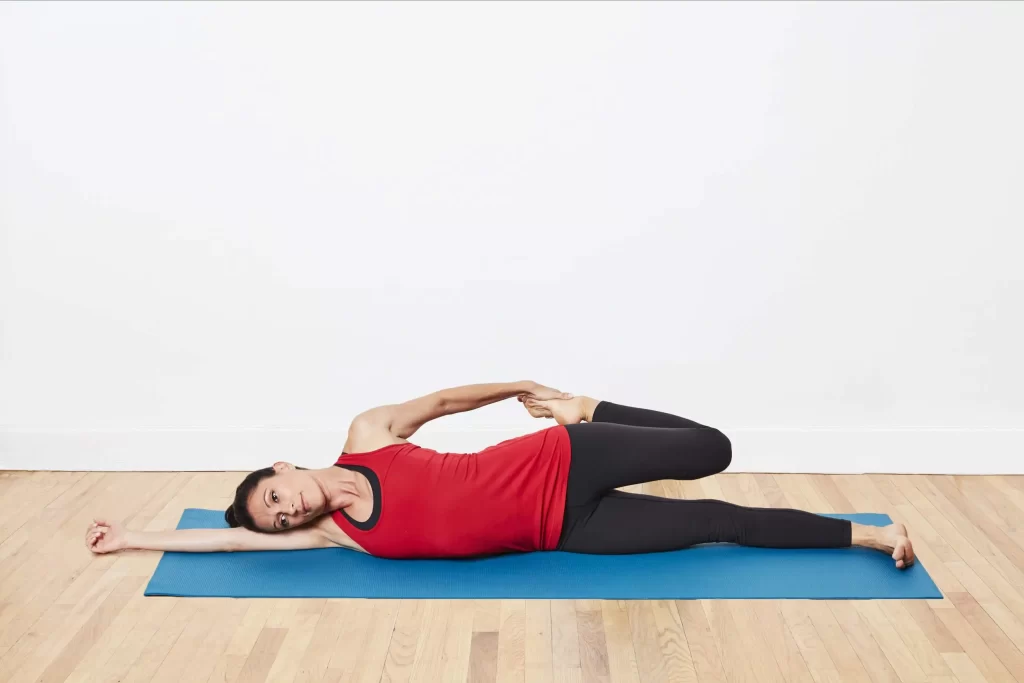
Lying Shin Stretch
- How to do:
- The lying Shin Stretch stretch is similar to the lying quadriceps stretch.
- Lie on the one side. Now, bend the upper knee so your foot is behind the back.
- Reach back & grasp the forefoot, pulling it towards the back.
- Hold for 10-20 seconds.
- Repeat for both feet.
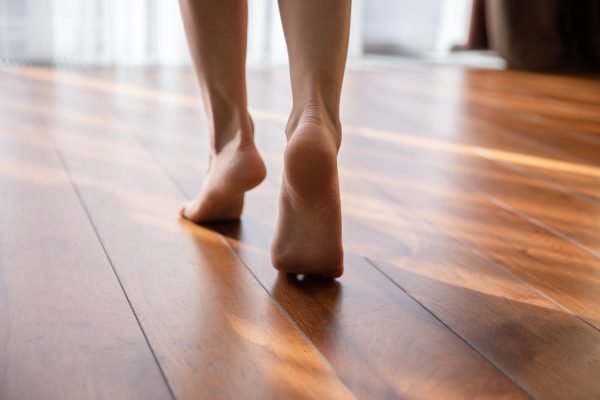
Toe walking
- How to do: Stand tall. Now transfer the body weight onto the toes & heels off the floor.
- Then walk on the toes which gives to you dynamic shin stretch.
- You can use the wall for support throughout the walk.
- Walk for 1-2 minutes.
Ankle ABC’s
- How to do: Moving the ankle in multiple directions is one way to slowly stretch the tibialis anterior.
- Take a comfortable sitting position with the feet unsupported. Remove your shoes & socks.
- Slowly draw the alphabet in the air, leading with the big toe. Take as far as possible in each direction. Never allow your knee to move — all movement might come from your ankle.
- Every time the foot is pointed downward, you should feel a pulling sensation along the front of your shin.
- Repeat the alphabet 2-3 times on both legs.
Health Benefits of tibialis anterior muscle stretching
There are many type benefits you might know:
- Reduce the risk of injury to calves, ankles & feet
- Reduced chance of getting tibialis anterior tendonitis
- Better ground clearance when walking to avoid tripping
- Reduce the risk of growing shin splints & stress fractures
- Fast-up recovery of shin splints.
- Increased athletic performance in sports where the ankle is “locked” like in soccer to kick a ball
- Increases the ankle range of motion. such as dorsiflexion,inversion, & adduction.
- It also maintains the medial arch of the foot.
- It also helps in the anticipatory postural adjustment part during gait beginning tibialis anterior perform knee flexion at the stance limb by causing forward displacement of the tibia.
- It also helps in eccentric deceleration of foot plantar flexion, pronation & eversion.
Strengthening exercise of the tibialis anterior muscle
- Tibialis anterior strengthening exercise is a great option to strengthen the leg, strengthening exercise has many health benefits & reduces the risk of injury, or helps the fitness level (stamina) in performing the day-to-day activity. If you are a sportsperson this exercise plays an important role to perform a high-intensity activity in sports.
- Seated Elastic Band Exercise for Foot Drop
- Cuff Weight Exercise for Foot Drop
- Isometric Exercise for Foot Drop
- Seated Calf Stretch
- Seated Toe Raises
- Wall Toe Raises
- Heel Walk
Seated Elastic Band Exercise for Foot Drop
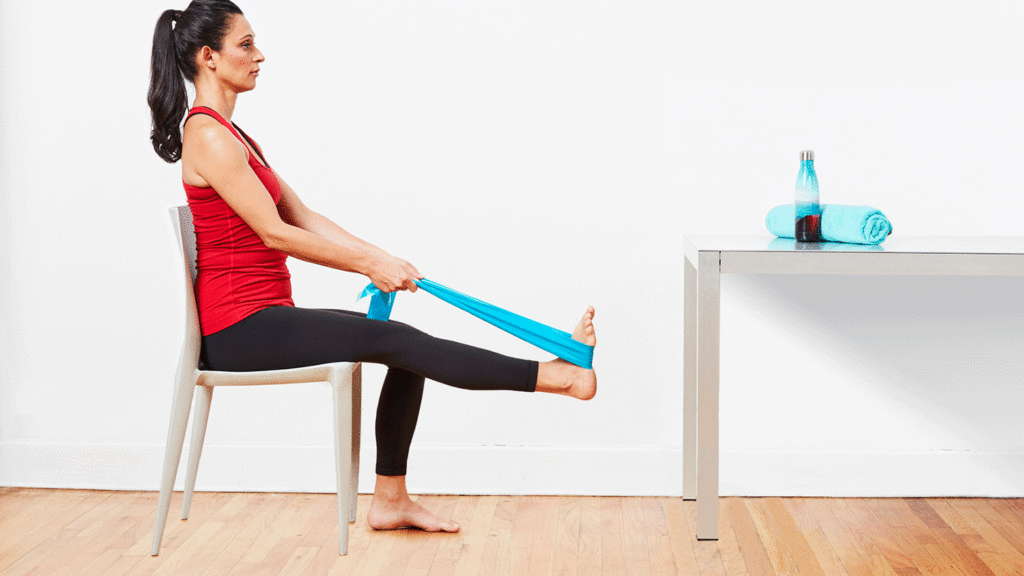
How to do it?
- For Seated Elastic Band Exercise for Foot Drop exercise, you need an elastic resistance band.
- To perform Seated Elastic Band Exercise for the Foot Drop exercise you have to Sit on the floor with the leg extended in front of you. now Alternatively you can sit on a chair with the foot propped up on another chair.
- Wrap a resistance band over the ankle. Attach one end to a stable object like the leg of a table, & secure the other around the foot near the toes. It may be helpful to have the lower leg resting on a small pillow so the heel of the foot does not rub on the floor.
- To perform this exercise Pull the toes & foot up while keeping the knee extended. The ankle might be moved as you flex the foot up
- Pull the foot up as much as you can, & hold the end position for 2 seconds.
- Slowly relax back to the starting position.
- Do this exercise for 10-20 repetitions or until the anterior tibialis muscle tires & you can no longer flex the ankle up.
Cuff Weight Exercise for Foot Drop
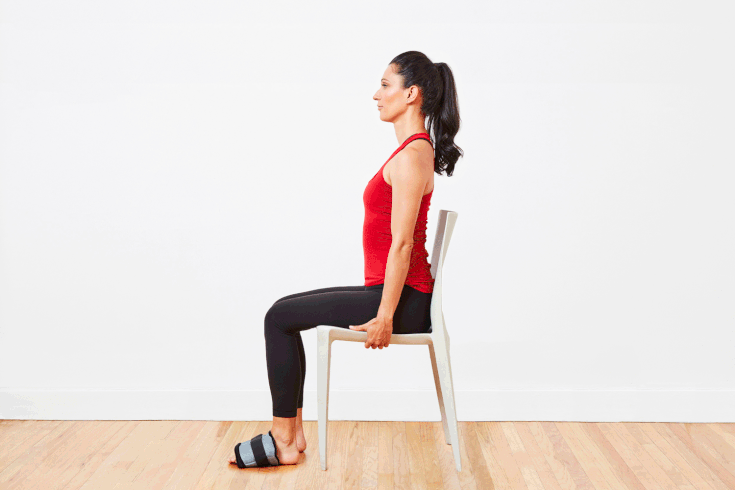
How to do it?
- For Cuff Weight Exercise for Foot Drop exercise, you need a cuff weight.
- A cuff weight is a padded weight that you can wrap around the ankle. for Cuff Weight Exercise for the Foot Drop exercise, you have to sit in the chair & wrap a cuff weight around the toes. Make sure it is secure. Let the footrest on the floor, start this exercise by sitting with the cuff weight on the foot & then flexing the ankle so the foot & toes move up towards the knee.
- When the foot is flexed up, hold the position for 2 seconds,
- Gradually lower your toes back down to the initial position.
- Repeat the exercise for 10-20 repetitions.
Isometric Exercise for Foot Drop
How to do it?
- Isometric exercise is a type of movement in which you push against an object you can not move. It is simple to do, & it can help strengthen the anterior tibialis muscle in specific ranges of motion (ROM) in the ankle.
- To do isometric anterior tibialis strengthening you have to Sit in a chair & lie down.
- Cross 1 leg over the other with the affected leg on the bottom.
- Put the foot on top of the ankle you wish to exercise.
- Press the top of your weak foot into the sole of the other foot. Press down with the powerful foot to resist it. Remember, that movement occurs from the foot not from the ankle.
- Hold this position for 5 seconds, & then slowly release. Perform about 10 -15 repetitions of the exercise, 2 – 3 times a day. Isometric exercise can help to strengthen the muscles, but strength only occurs in the specific ROM in which you are exercising. That means that you might vary the position of the ankle when performing the exercise.
Seated Calf Stretch
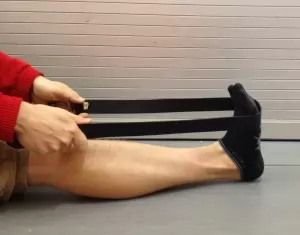
How to do it?
- If your anterior tibialis muscle is weak, then you have difficulty flexing the foot. This means you have a shortened calf. A shortened calf will be a tight muscle, so stretching the calf may be necessary to fully correct the foot drop.
- To perform this exercise you have to Wrap a towel around the ball of the foot, & the knee should be extended.
- Pull the ends of the towel so your foot flexes up & stretches your calf.
- Hold the stretch for 15-30 seconds.
- Relax. Perform this 3 times.
Seated Toe Raises
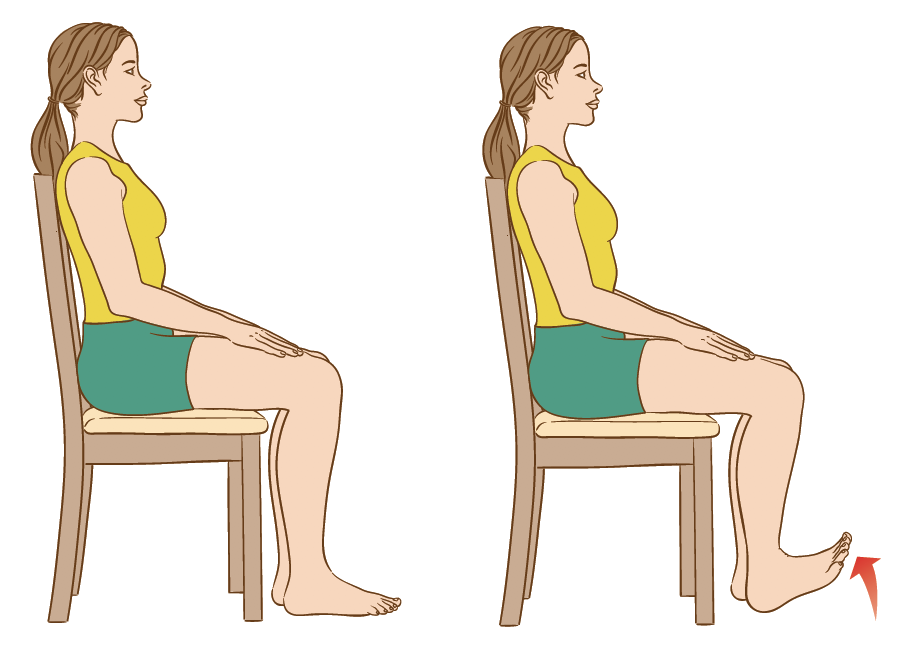
How to do it?
- For the Seated Toe Raises exercise, you have to Sit on a chair with the feet placed in front of you
- Now gradually raise your toes off of the ground.
- Hold for 2-5 seconds at the top
- Repeat for 2 -3 sets of 20-25 repetitions
Wall Toe Raises
How to do it?
- For the Wall Toe Raises exercise, you have to Stand 12-15 inches away with the back towards the wall with the feet hip-width apart.
- the knees might be slightly flexed then lean back into the wall.
- Elevate the toes off the floor & hold at the top for 2-4 seconds then lower the toes back to the floor.
- Repeat for 2-3 sets of 15-20 repetitions
Heel Walk

How to do it?
- For the Heel Walk exercise, you have to stand on both feet hip-width apart with no shoes on.
- Elevate the toes off the floor so that your heels are in contact with the floor.
- Walk forward while leaning back and placing weight on the heels.
- Do this for 30-40 seconds.
- Repeat this 2 to 3 times.
When did you not do the Tibialis anterior strengthening exercise?
- If you feel any pain during this exercise then do not do this exercise.
- If you are already suffering from foot & ankle pain.
- If your doctor advised you to take rest.
- If the lower limb bones are recently fractured.
Health benefits of tibialis strengthening exercise:
- Assist to Reduce the risk of injury to the calf, foot, & ankle joints.
- Assist to reduce the chance of getting tibialis anterior tendonitis.
- Assist to increase ground clearance when walking to avoid tripping
- Reduce the risk of growing shin splints & stress fractures
- Speed up recovery of shin splints.
- Boost player performance in sports where the ankle is locked like in soccer to kick a ball
What are the safety & precautions of doing tibialis anterior exercise?
There are some safety measures you require to look for:
- Don does not bounce during the tibialis anterior stretch. it causes injuries to the muscles. Such as strain.
- Never overstretch a tibialis anterior muscle.
- Do not perform it so many times, it causes fatigue to the muscle. You might use a suggested time of repetition
- The holding time of the stretch should be recommended by your therapist which is normally 30-60 seconds.
- Never perform a stretch on the prior injured part of the body. Such as fractures, sprains, etc.
- Never stretch cold muscles, it causes pain. stretch it once you warm up the muscle.
FAQ
Tibialis Anterior Strengthening Exercises
Seated Toe Raises. Sit on a chair with your feet in front of you. Gradually raise the toes off of the floor.
Wall Toe Raises. Stand 12 inches away with the back towards the wall with feet hip-width apart.
Heel Walk. Stand hip-width apart with no shoes on.
When the tibialis anterior muscle is overworked, you may experience pain & tightness at the front of the lower leg. This can be while walking or while applying pressure to the affected part. While walking, the pain would be more severe while lowering the foot to the floor, immediately after the heel strike
The anterior tibial tendon is situated on the inner front of the ankle. The tibialis anterior muscle & tendon work together to flex the foot upwards. This condition happens when the tendon is inflamed from overuse or traumatic ankle injury. If left untreated, the tendon can rupture & is very hard to treat.
Focus on reducing stress on the tibialis anterior by wearing shoes with a lower heel & sticking to softer surfaces when you run, & increase the tendon & muscle strength by doing heel walks & wall toe raises. Optionally, you can try kinesiology taping & compression wear to help speed the recovery.
To do isometric tibialis anterior strengthening, follow these simple directions:
Sit in a chair & lie down.
Cross 1 leg over the other with the affected leg on the bottom.
Place the foot on top of the ankle you wish to exercise.
Press the top of the weak foot into the sole of the 2nd foot.

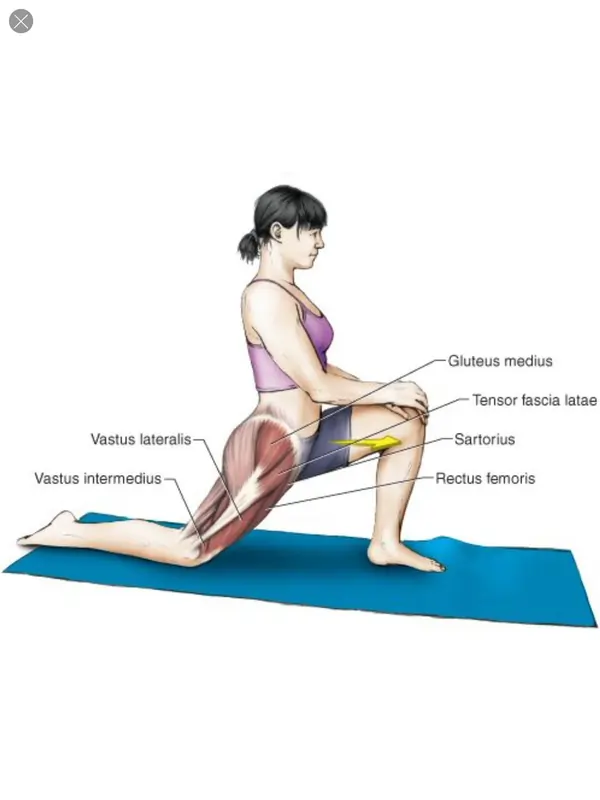
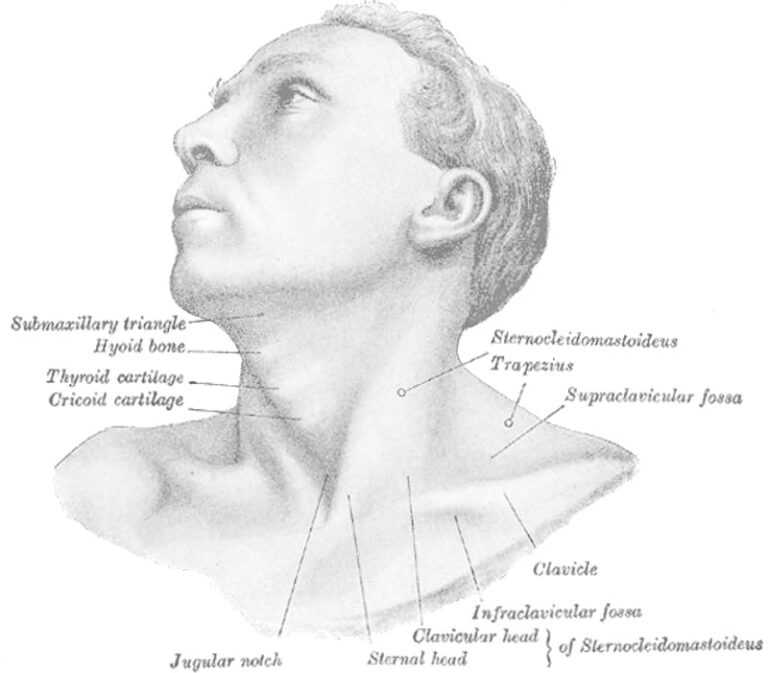
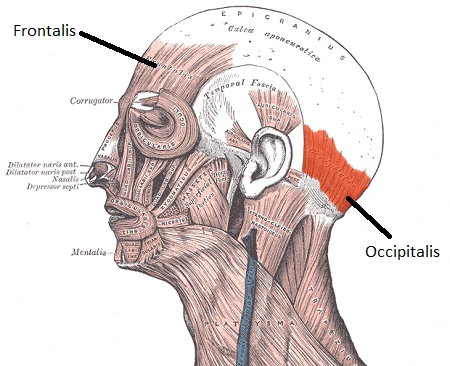

6 Comments